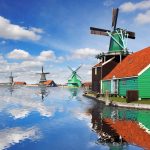
Bogotá, often called the “Athens of South America,” is located on a plateau 8,600 feet above sea level and nestled in the Eastern Cordillera of the Andes mountain range. Its cool climate (the result of its high altitude despite the proximity to the equator) and closeness to the Rio Magdalena, the only navigable river of the American tropics, establish it as the economic and political center of Colombia and the greater Andean region.
The presence of the Amazon rainforest, with its inhospitable climate and terrain, isolates Colombia from the rest of South America. This limitation inexorably drives Colombia’s economic and political pursuits to its northern neighbors, most notably the colossus of the United States. In 2012, an American-Colombian free trade agreement entered into force, increasing market access and decreasing tariffs on transactions between the two nations.
The United States continues to be Colombia’s largest trading partner, receiving emeralds, flowers, textiles, and bananas, while Colombia primarily imports agricultural and manufactured goods, including plastics and machinery, from the United States.
The same geographic features that encouraged economic and political development in the high plateau upon which Bogotá sits insulated the persistent development of guerrilla movements in the surrounding areas. The infamous rebel group FARC has maintained its militant status for more than 50 years, protected by the difficult topography of Colombian rural areas and funded by the illegal drug trade. The question now is whether a more organized and better-funded rival to the FARC – the Mexican cartels – will displace it and graduate Colombia to an entirely new level of violence.
For more information on the rising role of Colombia and the Caribbean, see Chapter 9 of The Accidental Superpower.



